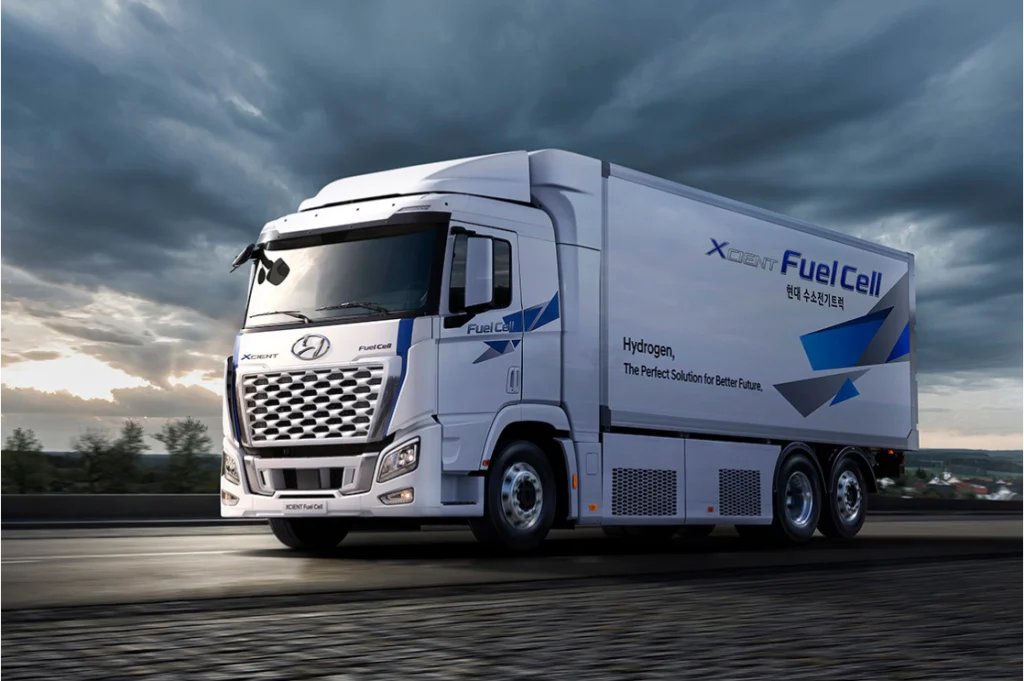Hyundai Is Working on Next Gen Hydrogen-Powered Drones—Here’s What They Look Like
BY Zacc Dukowitz
16 September 2021Hyundai is working on the next generation of drones—both aerial and ground-based—and is developing hydrogen fuel cells to power them.
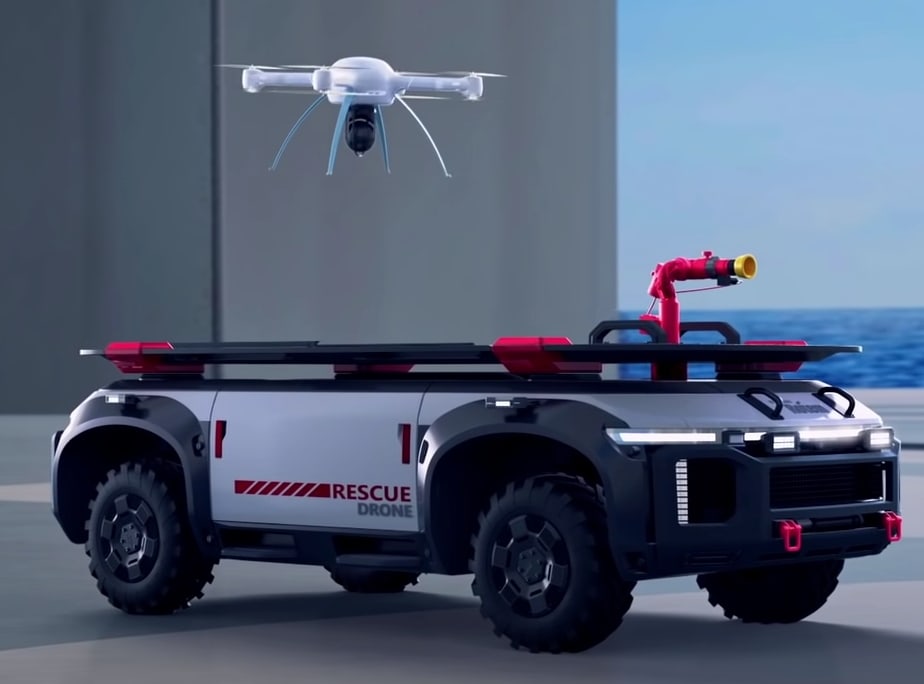
Hyundai’s Rescue Drone
Hydrogen is appealing because it can significantly reduce Hyundai’s carbon footprint, helping it tackle its goal of becoming carbon neutral by 2045.
Unlike diesel fuel, which emits CO2, hydrogen power will emit “only water as a byproduct” during operations, according to promotional materials released by the company.
This new concept shows how an automaker can contribute to tackling climate change.
– Euisun Chung, Chairman of Hyundai Motor Group
Check out this video to see what Hyundai’s new hydrogen-powered drones will look like (skip to 2:29 to see the aerial drone in action):
Hyundai’s e-Bogie Platform
Hyundai’s next-gen drones will use a “Fuel Cell e-Bogie,” which is a fully-enclosed system that can be attached to various types of ground-based vehicles.
The e-Bogie is really more like a smart robot than a traditional car. The fuel cell e-Bogie is a platform that offers limitless business applications.
– Sangyup Lee, Senior V.P. of Hyundai and Global Genesis Design
You can see the e-Bogies in action in the video above—they’re the independent platforms sitting under the containers in the Trailer Drone, allowing it to maneuver deftly around tight corners.
The e-Bogie system is powered by hydrogen fuel cells and gives vehicles independent four-wheel steering, allowing large shipping trucks to maneuver much more nimbly than traditional ones.


The term Bogie comes from the railroad industry, and refers to the wheel subframes that sit under each train car.
With two e-Bogies carrying a single container (as shown above), the movement of the truck isn’t constrained by its size, but can articulate from underneath.
The same concept applies to trains.
An entire train system can articulate along a curving track because it’s made up of several independent cars, allowing for greater flexibility of movement. Compare this to a large truck, which is a single unit that sits on a single platform, and you can imagine how the e-Bogie design will help dramatically improve maneuverability.
Hyundai’s Next Gen Fleet
So far, Hyundai has introduced two drones to showcase its plans for the future of transportation, and how we power it. (Both of these drones are highlighted in the video above.)
One of them is the Rescue Drone, a UAV that travels on an autonomous ground-based vehicle. And the other is the Trailer Drone, a shipping truck that uses e-Bogie platforms, allowing it to move nimbly through congested urban areas.
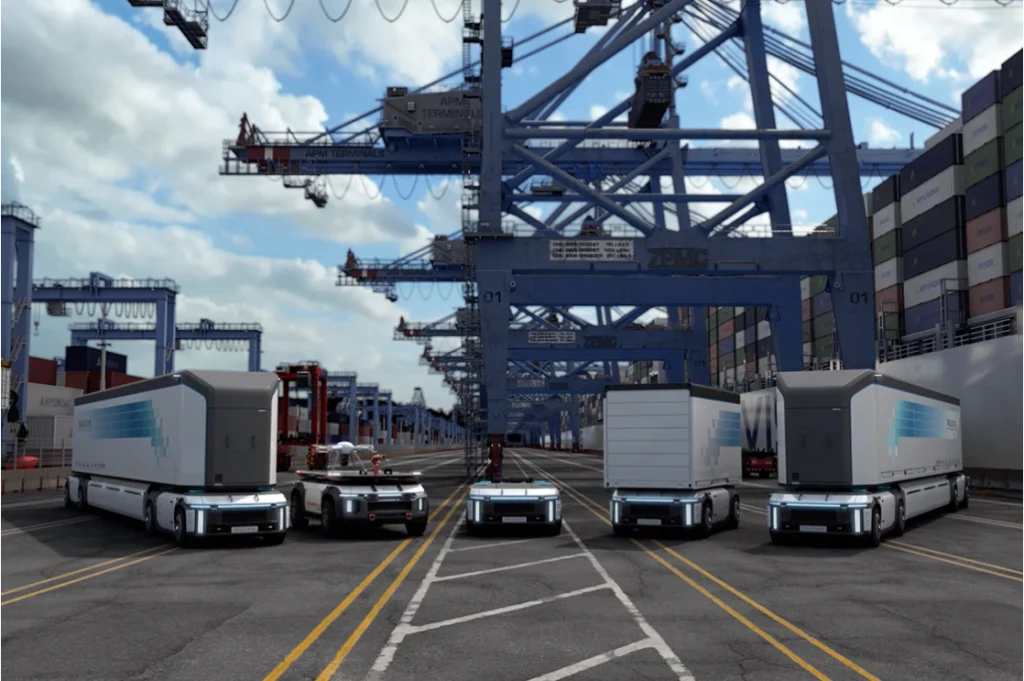

Artist’s rendering of Hyundai’s Rescue Drone and Trailer Drone in different arrangements
Here’s everything we know about Hyundai’s Rescue Drone and the Trailer Drone.
The Rescue Drone
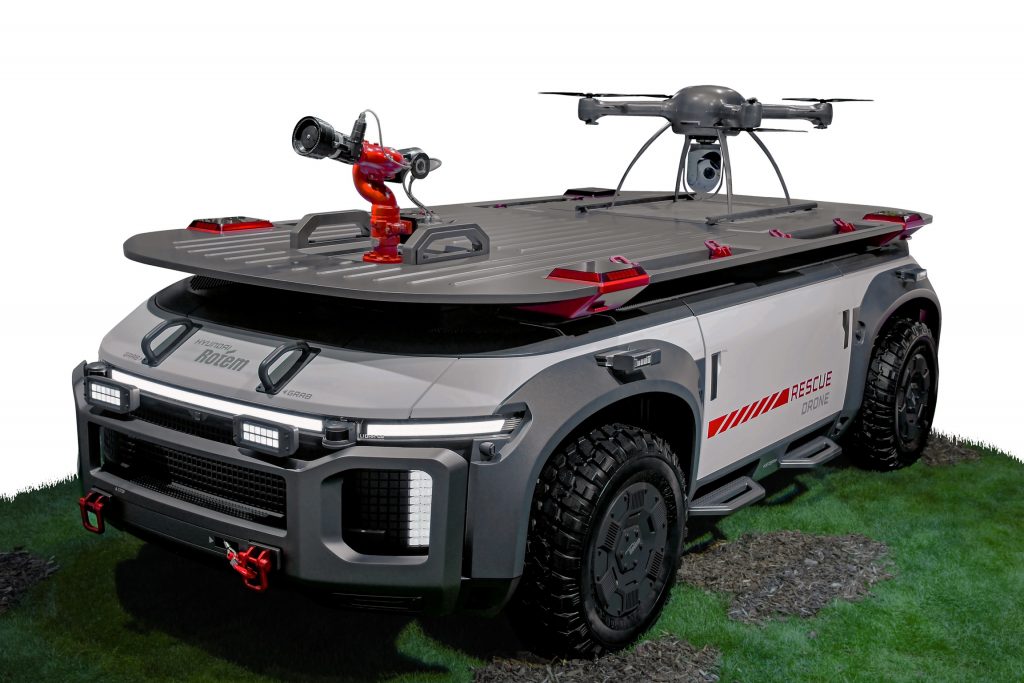

The Rescue Drone is a concept mobility solution that uses an e-Bogie to transport a UAV. Operators can fly the UAV remotely or autonomously, using it to collect visual data for fire-fighting or other emergency operations.
Using the e-Bogie platform, the Rescue Drone can navigate tight turns and quickly perform “crab-walk” driving to access places that traditional vehicles might have trouble entering.
The Rescue Drone platform’s ground-based component can travel 280-310 miles on a single charge. It also seems to come with a remote-controlled fire extinguisher (the red canon seen in the image above).
Here are a few standout features of the Rescue Drone:
- Combined UAV/ground-based drone solution
- Uses hydrogen instead of gasoline for fuel
- Can drive fully autonomously
- UAVs visual data can be used to operate the ground-based drone
The Trailer Drone
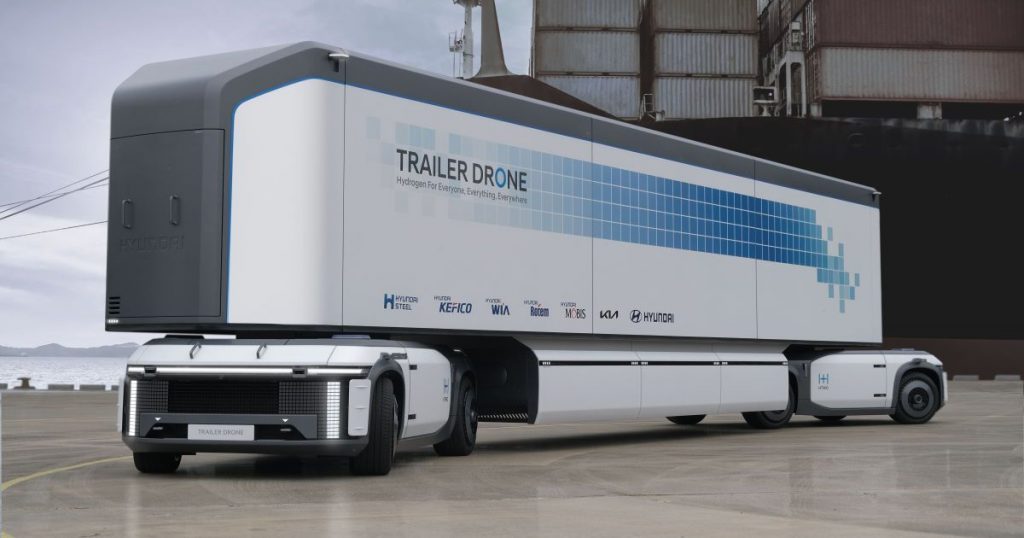

The Trailer Drone is a new imagining of how transportation trucks can be designed, using the e-Bogies to move easily through tight areas.
As you might have noticed, a single truck might use two, three, or even more e-Bogies, all of which can be removed from the container to perform other tasks, or combined to form a single unit.
Here are a few standout features of the Trailer Drone:
- Uses hydrogen instead of diesel for fuel
- Can drive fully autonomously
- Independent steering enabled by Hyundai’s e-Bogie platforms
- Ability to separate compartments into individual units and vehicles
The Hydrogen Wave—Hydrogen for Everyone, Everything, Everywhere
The Rescue Drone and the Trailer Drone are really just the tip of the iceberg.
Hyundai has a huge, ambitious vision to help the entire world transition away from its dependence on fossil fuels, and toward hydrogen power. The company says that it has started with ground vehicles since they emit a relatively large amount of CO2, but its vision extends far beyond trucks and cars.
In addition to ground transportation, Hyundai imagines a future where hydrogen is used to power almost every type of vehicle we use, including trams, trains, and ships.
The effort is so big that it could be called a movement. And the movement already has a name—The Hydrogen Wave.
Want to learn more about The Hydrogen Wave?
The 35-minute video embedded below provides some fascinating details about Hyundai’s vision for a hydrogen-powered future and some very concrete information on how they plan to get there:
Want to jump around in the video? Here’s a menu with jump-to links:
- 0:05—See the new fleet of hydrogen vehicles
- 01:51—Hyundai’s vision for a hydrogen-powered future
- 06:46—History of hydrogen power + testimonials from Hyundai clients already using its hydrogen fuel cells
- 15:49—How hydrogen power works and the benefits of renewable energy
- 27:59—The future of hydrogen mobility
What’s Next for Hydrogen Power?
Hyundai isn’t just making big plans for the future. It’s already started executing these plans.
In 2020, the company rolled out hydrogen fuel cells for trucking operations, putting a hydrogen fuel cell version of its XCIENT shipping truck on the market.
The hydrogen-powered XCIENT truck was created in a joint venture with a Swiss company called H2 Energy. The trucks weigh 34 tons, can travel 250 miles on a full tank, and take 8-20 minutes to fill up. 140 of the trucks will be shipped to Hyundai customers this year, with a total of 1600 trucks expected to be shipped by 2025.
In addition to the XCIENT, Hyundai has been working to apply its hydrogen fuel cell technology to all other types of commercial vehicles on the market.
Right now it’s planning to roll out hydrogen models for most vehicle types it already makes by 2028, with the goal of helping Korea (where the company is based) transition its public transportation and logistics systems to hydrogen-based solutions, providing a model that other countries can follow.


Artist’s rendering of Hyundai’s vision for the hydrogen-powered vehicles of the future
Hyundai also has an Urban Air Mobility division, which is highly involved in the creation and testing of taxi drones and Urban Air Ports devoted to their takeoff and landing.
And—you guessed it—Hyundai plans to power these drones with hydrogen.
Even if the company only achieves a small fraction of its plans to roll out hydrogen as a viable alternative to gasoline, the positive impact could be huge. It will be interesting to see how successful they are in the coming years, and to watch as the Rescue Drone and Trailer Drone are finalized and released into the world.

